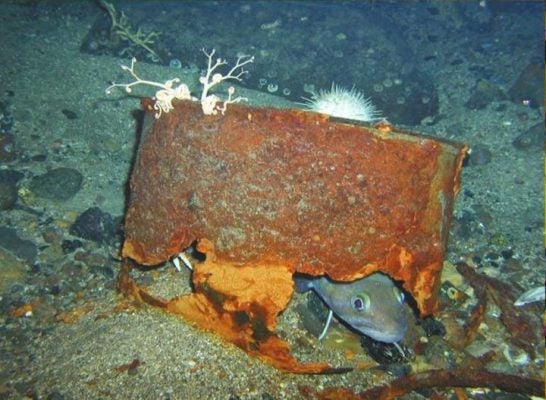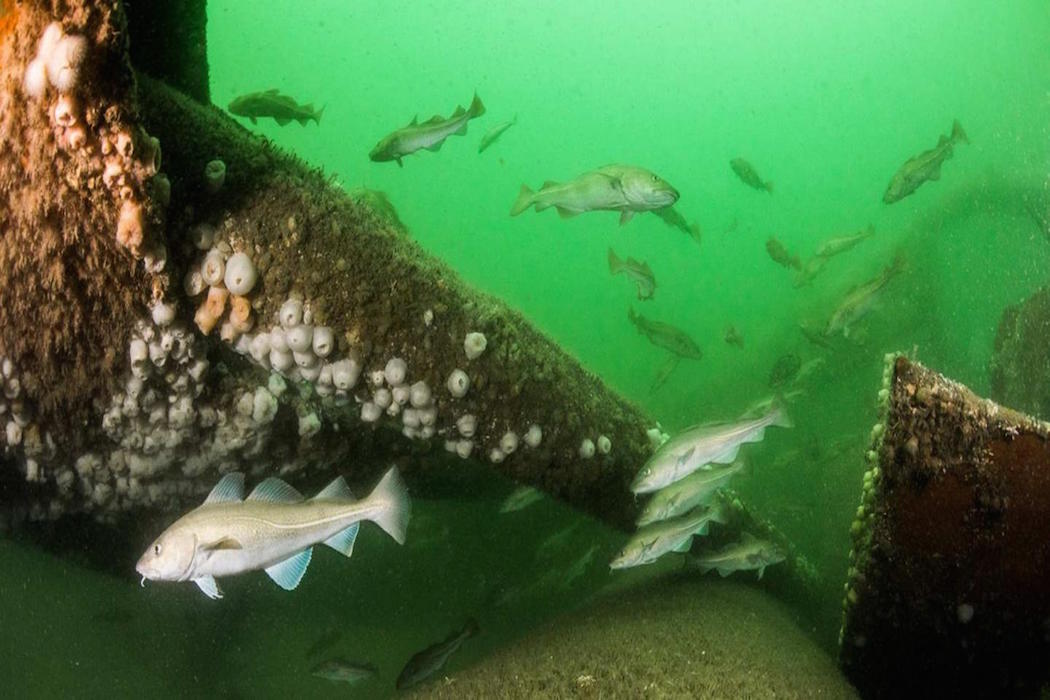There are more than 7,500 oil and gas platforms installed in the oceans around the world. As they become obsolete over the next decade, they will require removal under the current environmental regulations—a multibillion dollar effort that will demand sophisticated machinery and engineering prowess, plus cause a significant disturbance to the underlying ecosystems. But now, a team of international scientists including researchers from the Aarhus University in Denmark is arguing that there may be a less expensive and less environmentally costly way to retire these structures.
The scientists are suggesting that the aging oils rigs could be repurposed as ocean reefs. And they may help solve some of Denmark’s pressing marine problems.
In the late-twentieth century, Denmark mined many of its underwater rocks for construction purposes, which severely affected the ocean floor. The fish lost their breeding grounds while the mussels and algae lost the surfaces they need to attach to in order to grow and to spawn new colonies. The resulting ocean bottom became so flat that there were no areas to harbor deep sea life, which caused a decline in the fishing grounds and in the overall marine diversity. “For the last 100 years we destroyed some of the important marine habitats,” says senior researcher Jonas Teilmann from Aarhus University. “Young fish don’t have a place to hide, they get eaten and that sets off a cascade of issues.” The situation is so severe, he says, that the country is trying to rebuild its underwater reefs with boulders bought and transported from other places.
Want more stories like this one?
But the oil and gas platforms dotting the North Sea seemed to have developed into rather successful marine life habitats. Recent photos taken by underwater cameras at an old oil rig in the North Sea revealed thriving marine communities—cod, flatfish and other bottom sea creatures. “We also see many more porpoises around oil rigs than in the surrounding sea,” Teilmann says. “It’s easy to understand why the porpoises enjoy the area. One can’t throw a fish hook without catching one of the many cod around the legs of the oil rig.”
Moreover, this phenomenon isn’t unique to the North Sea. A recent study found that oil platforms off the coast of California are among the most productive marine fish habitats in the world. Oil rig platforms have a high ratio of structural surface area to seafloor surface area, which results in a spacious and safe habitat for young and adult fishes over a relatively small footprint of seafloor.
The rigs to reefs conversion would require a change of regulations. The requirements that mandate complete removal of offshore oil and gas infrastructure were put in place by the 1958 Geneva Convention on the Continental Shelf—to make sure that the oil companies took responsibility for their obsolete infrastructure. But the process by which this infrastructure is dismantled can vary. The Aarhus University researchers and the their team argue that complete removal of oil rigs would destroy the artificial reefs formed around these structures over the years, and leave the ocean floor bare once again. It would make more sense, they say, to cut the existing structures in half, severing the top half and leaving the bottom half intact and moored into the ocean floor. The top half could then be hauled away, or sunk to the bottom, adding more space to the already formed reef and more shelter for ocean life.

Not everyone agrees with the concept. Some believe that legalizing this rigs to reefs conversion may encourage the so-called “ocean dumping,” creating a loophole allowing companies to dispose their obsolete equipment and other refuse into the sea. Others are concerned that creating reefs where they haven’t been before might open doors to invasive species that would colonize the structures and alter the ecosystem.
But the idea certainly holds promise, and researchers believe that with the right regulations and the proper assessment of the ecosystems that already developed around the rigs, it might work. Moreover, keeping the bottom parts of the platforms intact would prevent overfishing. It would keep the areas closed to commercial trawlers, which drag fishing nets across the ocean floor, sweeping everything within reach. “The heavy trawls turn the seabed into a uniform desert with poor biodiversity,” says Jonas Teilmann. “The physical structures also ensure that the areas will not be trawled.”







